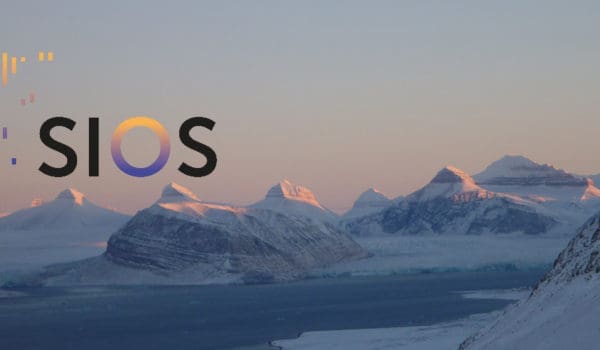In January, 24 institutions from 9 countries formally joined forces in an extra-ordinary initiative towards long-term research cooperation – the Svalbard Integrated Arctic Earth Observing System (SIOS).
SIOS establishes and maintains coordination between research infrastructures in and around Svalbard and promotes open access to
infrastructure and data. The common goal of all SIOS partners is to establish an observing system that will improve knowledge of
environmental changes in the Arctic. SIOS will enhance our understanding of climate change and its effects collaboratively yet efficiently.
On 26 January 2018, state secretary Rebekka Borsch from the Norwegian Ministry of Education opened the General Assembly during which the consortium for the Svalbard Integrated Arctic Earth Observing System (SIOS, www.sios-svalbard.org) was consolidated through the signing of a Memorandum of Understanding. This event marked the transition of SIOS into its operational phase after ten years of preparations and pilot activities.
SIOS develops a coordinated network of high-quality scientific observations
Environmental change is one of the most important challenges we face today. Global climate models demonstrate that Polar Regions play a crucial role in the Earth’s climate system. The Arctic region will experience the most severe and rapid warming worldwide, with a computed annual average temperature increase of 4-8 degrees and significant increases in precipitation in scenario simulations for the end of the 21st century. This will have consequences for humans and the natural environment locally, but also has implications globally. For this reason Svalbard, situated in the High Arctic, is an important arena for investigations of environmental and climate change.
“SIOS is a high priority for the Government.” said Borsch. She explained that the aim of SIOS, to integrate Arctic Earth observations by coordinating and giving mutual access to infrastructure and data on Svalbard, always had appealed to the Ministry. In Svalbard, a broad spectrum of high-end research infrastructure has been established by many international institutions and there are already good relations between the infrastructure providers. Thus, Svalbard is the best place to realise such an ambitious goal. SIOS connects the world-class research infrastructure owned by several international institutions into a
coordinated network of scientific observations in the Svalbard region. All main nodes for research in Svalbard, Ny-Ålesund, Longyearbyen, Barentsburg and Hornsund are committed to SIOS and the consortium includes partners from Europe as well as Asia.
The establishment of such a systematic network will help to address important questions related to Global Environmental Change. SIOS is offering a single-point of access to infrastructure, tools and services on behalf of its membership. It also supports the development of new methods and increased use of satellite data. SIOS cooperates with organisations across the Arctic to share data and best practices, thus facilitating a better understanding of the role of the Arctic in the Earth System.
“I expect that SIOS will be of great importance for the scientific development, not only on Svalbard itself, but also for the circumpolar research cooperation in general, among others to the SAON project organised by the Arctic Council“, concluded Borsch.

Contact:
Christiane Hübner, informasjonssjef SIOS, information@sios-svalbard.org; tlf: +47
7902 33 66
Kim Holmén, styreleder SIOS, kim.holmen@npolar.no; tlf: +47 7902
26 12
